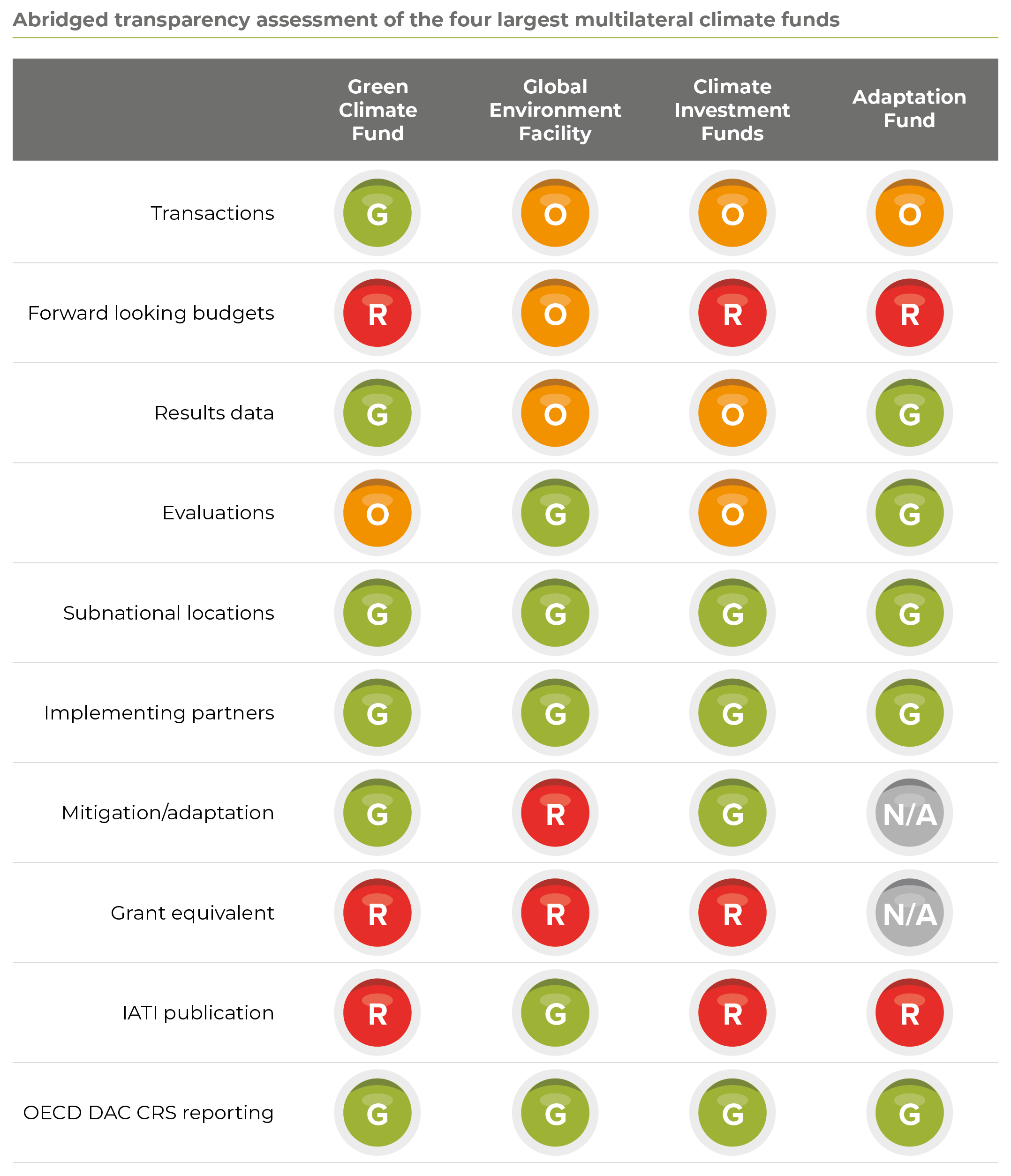How transparent are climate funds?
At COP29 in Baku, world leaders committed to a new climate finance target of $300 billion annually by 2035, tripling the previous goal. There is now increased attention on how this goal will be achieved – who will provide the finance, in what form, who will receive it and for what kinds of projects? And critically, what impact will this finance have on climate mitigation and adaptation efforts?
To answer these questions, transparency is vital.
The crucial role of climate funds
Multilateral climate funds play a crucial role in channelling significant portions of climate finance and they will be key in efforts to meet the new goal. Climate Funds Update lists 24 multilateral funds and initiatives and a further 17 national, regional, and collaborative funds.
We wanted to gain an insight into the transparency of these funds – and so we have investigated the four largest multilateral climate funds: the Green Climate Fund, Global Environment Facility, Climate Investment Funds, and Adaptation Fund. Collectively, these four funds manage nearly $50 billion in pledged funding.
The transparency of the four largest climate funds
Our new paper, Better Data for Better Outcomes: How climate funds can enhance transparency, sets out the results of our short transparency assessment of the four funds. We find that these funds publish good financial and project-level data on their own websites, with examples of leading practice in some areas.
However, their reporting practices vary, and only one of the four funds (the Global Environment Facility) publishes open data in the International Aid Transparency Initiative (IATI) Standard. This limits comparability with other climate funding as well as development and humanitarian finance, and makes it more difficult for governments, CSOs and citizens to get a complete picture of the funding coming into their country.
A lack of standardised and comparable data can also hinder the ability of stakeholders to coordinate funding, assess effectiveness, and drive learning. Greater transparency also helps identify gaps, avoid duplication, and ensure that climate finance reaches those who need it most.

Achieving greater transparency
To strengthen climate finance transparency, we recommend that climate funds align with international reporting standards, publish granular and accessible data, and improve disclosures on project results, implementing partners, and subnational allocations. We stand ready to collaborate with climate funds to achieve these transparency improvements, ensuring that climate finance delivers real and measurable benefits for people and the planet.
Following this initial assessment of the four largest climate funds, Publish What You Fund proposes to carry out more detailed analysis of a larger set of multilateral climate funds and advocate for greater transparency among these to bring them into line with international standards.
You can read more about our work to understand and improve the climate finance transparency of development finance institutions and to compare climate finance flows with identified country needs here.

